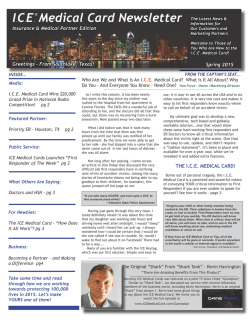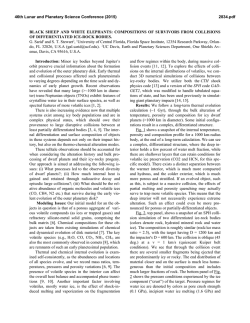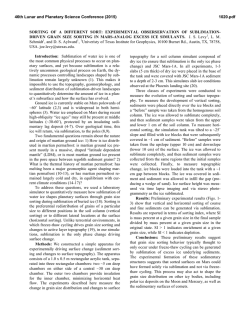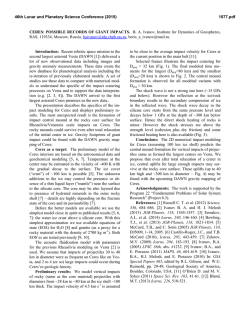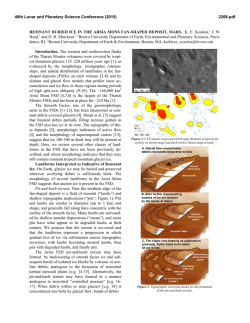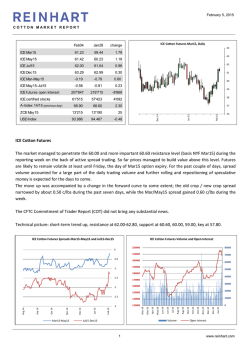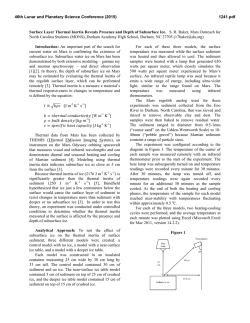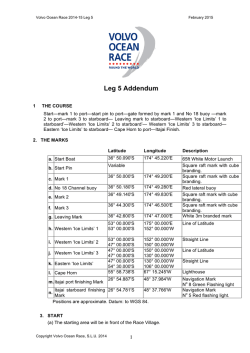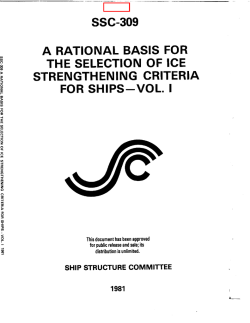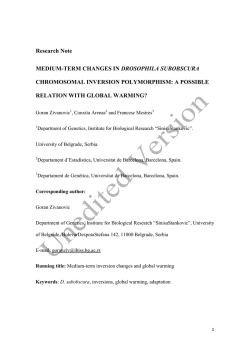
international english language testing system specimen materials
SPECIMEN MATERIALS Listening Booklet INTERNATIONAL ENGLISH LANGUAGE TESTING SYSTEM SPECIMEN MATERIALS LISTENING TIME ALLOWED: NUMBER OF QUESTIONS: 30 minutes 40 Instructions You will hear a number of different recordings and you will have to answer questions on what yon hear. There will be time for you to read the instructions and questions and you will have a chance to check your work. All the recordings will be played ONCE only. The test is in four sections. Write all your answers in the Listening Question Booklet. At the end of the test you will he given ten minutes to transfer your answers to an answer sheet. ©UCLES University of Cambridge CSOL Examinations British Council IDP Education Australia SECTION 1 Questions 1 -10 Questions 1 — 8 Complete the form below. Write NO MORE THAN THREE WORDS AND/OR A NUMBER for each answer. PACKHAM’S SHIPPING AGENCY -customer quotation form Example Answer Country of destination: Kenya Name: Jacob 1 …….… Address to be collected from: 2 ………. Town: Bristol Postcode: 3……….. College, Downlands Rd Size of container: Length: 1.5m Width: 4………. Contents: clothes 6 ...... … 7 ...... … Total estimated value: 8 £…..... Height: 5……… Questions 9 and 10 Choose the correct letter, A, B or C. 9 Type of insurance chosen A B C 10 Economy Standard Premium Customer wants goods delivered lo A B C port home depot SECTION 2 Questions 11 - 20 Questions 11-20 Answer the questions below. Write NO MORE THAN THREE WORDS AND/OR A NUMBER for each answer. What TWO factors can make social contact in a foreign country difficult? • 11.............................. • 12.............................. Which types of community group does the speaker give examples of? • theatre • 13................................. • 14................................. In which TWO places can information about community activities be found? • 15................................. • 16 ............................... What is the speaker's second suggestion for meeting people? • 17............................................. What is the maximum cost of a course? • 18.......................... What TWO things could confident people give a talk about? • 19.................................................... • 20.................................................... SECTION 3 Questions 21 - 30 Questions 21-26 Complete the notes below using letters A-F from the box. NB You may use any letter more than once. A writing B note-taking C working with numbers D reading E videos F exam preparation The Open University Good Study Guide What Rachel found most useful in the book: 21 ............................ 22 ............................ 23 ............................ What Paul needs: 24 ................................ 25 ................................ 26 ............................ Questions 27—30 Complete the sentences below. Write NO MORE THAN TWO WORDS for each answer. Studying with the Open University demanded a great deal of 27 ................................... Studying and working at the same time improved Rachel's 28 ................................. skills. It is helpful that the course was structured in 29................................... She enjoyed meeting other students at 30 .................................. SECTION 4 Questions 31—40 Questions 3I - 40 Complete the notes below. Write NO MORE THAN TWO WORDS AND/OR A NUMBER for each answer. ANASAZI INDIANS The name 'Anasazi’ means 31 ......................... ones. Many 32................... can he seen today in Chaco Canyon. The early Anasazi focused increasingly on how to grow and 33 ....................... crops. Anasazi crafts included making sandals and 34.............................. Development of Anasazi culture 500 -750 Introduction of: • bow and arrow . • 35 ................... • pottery (two types): grey 36 ....................... pots black-on-white painted pots 750-1050 1050 - 1125 Construction changes: • new rooms at ground level • introduction of 37...................... systems • new building materials Road building: • roads up to 38.................... wide Decline of the Anasazi When attacked by other Indians, the Anasazi built their homes into 39................. The Anasazi are thought to have died out because of: • lack of food and resources • 40 ... .................. • breakdown of society SPECIMEN MATERIALS Academic Reading Booklet INTERNATIONAL ENGLISH LANGUAGE TESTING SYSTEM SPECIMEN MATERIALS ACADEMIC READING TIME ALLOWED: NUMBER OF QUESTIONS: 1 hour 40 Instructions ALL ANSWERS MUST BE WRITTEN ON THE ANSWER SHEET The test is divided as follows: Reading Passage 1 Questions 1-14 Reading Passage 2 Questions 15-27 Reading Passage 3 Questions 28-40 Start at the beginning of the test and work through it. You should answer all questions. If you cannot do a particular question leave it and go on to the next. You can return to it later. ©UCLO University of Cambridge ESOL Examinations British Council IDP Education Australia READING PASSAGE 1 You should spend about 20 minutes on Questions 1-14 which are based on Reading Passage 1 on pages 9 and 10. Spider silk cuts weight of bridges A strong, light bio-material made by genes from spiders could transform construction and industry A Scientists have succeeded in copying the silk-producing genes of the Golden Orb Weaver spider and arc using them to create a synthetic material which they believe is the model for a new generation of advanced bio-materials. The new material, biosilk, which has been spun for the first time by researchers at DuPont, has an enormous range of potential uses in construction and manufacturing. B The attraction of the silk spun by the spider is a combination of great strength and enormous elasticity, which man-made fibres have been unable to replicate. On an equal-weight basis, spider silk is far stronger than steel and it is estimated that if a single strand could be made about 10m in diameter, it would be strong enough to stop a jumbo jet in flight. A third important factor is that it is extremely light. Army scientists are already looking at the possibilities of using it for lightweight, bullet-proof vests and parachutes. C For some time, biochemists have been trying to synthesise the drag-line silk of the Golden Orb Weaver. The drag-line silk, which forms the radial arms of the web, is stronger than the other pans of the web and some biochemists believe a synthetic version could prove to be as important a material as nylon, which has been around for 50 years, since the discoveries of Wallace Carothers and his team ushered in the age of polymers. D To recreate the material, scientists, including Randolph Lewis at the University of Wyoming, first examined the silk-producing gland of the spider. "We took out the glands that produce the silk and looked at the coding for the protein material they make, which is spun into a web. We then went looking for clones with the right DNA." he says. E At DuPont, researchers have used both yeast and bacteria as hosts to grow the raw material, which they have spun into fibres. Robert Dorsch, DuPont's director of biochemical development, says the globules of protein, comparable with marbles in an egg, are harvested and processed. "We break open the bacteria, separate out the globules of protein and use them as the raw starting material. With yeast, the gene system can be designed so that the material excretes the protein outside the yeast for better access," he says. F "The bacteria and the yeast produce the same protein, equivalent to that which the spider uses in the drag lines of the web. The spider mixes the protein into a water-based solution and then spins it into a solid fibre in one go. Since we are not as clever as the spider and we are not using such sophisticated organisms, we substituted man-made approaches and dissolved the protein in chemical solvents, which are then spun to push the material through small holes to form the solid fibre." G Researchers at DuPont say they envisage many possible uses for a new biosilk material. They say that earthquake-resistant suspension bridges hung from cables of synthetic spider silk fibres may become a reality. Stronger ropes, safer seat belts, shoe soles that do not wear out so quickly and tough new clothing are among the other applications. Biochemists such as Lewis see the potential range of uses of biosilk as almost limitless. "It is very strong and retains elasticity: there are no man-made materials that can mimic both these properties. It is also a biological material with all the advantages that has over petrochemicals," he says. H At DuPont's laboratories, Dorsch is excited by the prospect of new super-strong materials but he warns they are many years away. "We are at an early stage but theoretical predictions arc that we will wind up with a very strong, tough material, with an ability to absorb shock, which is stronger and tougher than the man-made materials that are conventionally available to us," he says. I The spider is not the only creature that has aroused the interest of material scientists. They have also become envious of the natural adhesive secreted by the sea mussel. It produces a protein adhesive to attach itself to rocks. It is tedious and expensive to extract the protein from the mussel, so researchers have already produced a synthetic gene for use in surrogate bacteria. Questions 1—5 The passage has nine paragraphs A-I. Which paragraph contains (he following information? Write the correct letter A-l in boxes 1-5 on your answer sheet. 1 a comparison of the ways two materials are used to replace silk-producing glands 2 predictions regarding the availability of the synthetic silk 3 on-going research into other synthetic materials 4 the research into the part of the spider that manufactures silk 5 the possible application of the silk in civil engineering Questions 6—11 Complete the flow chart below. Choose NO MORE THAN THREE WORDS from the passage for each answer. Write your answers in boxes 6-11 on your answer sheet. Synthetic gene growth in 6 ................... or 7 ...................... globules of 8........................ dissolved in 9........................ passed through 10 ........................ to produce 11.......................... Questions 12 - 14 Do the following statements agree with the information given in Reading Passage 1? In boxes 12-14 on your answer sheet write TRUE FALSE NOT GIVEN if the statement agrees with the information if the statement contradicts the information if there is no information on this 12 Biosilk has already replaced nylon in parachute manufacture. 13 The spider produces silk of varying strengths. 14 Lewis and Dorsch co-operated in the synthetic product ion of silk. READING PASSAGE 2 You should spend about 20 minutes on Questions 15-27 which are based on Reading Passage 2 on pages I3 and 14. TEACHING IN UNIVERSITIES In the 19th century, an American academic, Newman, characterised a university as: "a place of teaching universal knowledge...(a place for) the diffusion and extension of knowledge rather than its advancement." Newman argued that if universities were not for teaching but rather for scientific discovery, then they would not need students. Interestingly, during this century, while still teaching thousands of students each year, the resources of most universities have been steadily channelled away from teaching into research activities. Most recently, however, there have been strong moves in both North America and the United Kingdom to develop initiatives that would enhance the profile of the teaching institutions of higher education. In the near future, therefore, as well as the intrinsic rewards gained from working with students and the sense that they are contributing to their overall growth and development, there should soon be extrinsic rewards, in the form of job promotion, for those pursuing academic excellence in teaching in universities. In the future, there will be more focus in universities on the quality of their graduates and their progression rates. Current degree courses, whose assessment strategies require students to learn by rote and reiterate the course material, and which do not require the student to interact with the material, or construct a personal meaning about it or even to understand the discipline, are resulting in poor learning outcomes. This traditional teaching approach does not take into account modern theories of education, the individual needs of the learner, nor his or her prior learning experience. In order for universities to raise both the quality and status of teaching, it is first necessary to have some kind of understanding of what constitutes good practice. A 1995 report, compiled in Australia, lists eight qualities that researchers agree are essential to good teaching. Good teachers... A are themselves good learners - resulting in teaching that is dynamic, reflective and constantly evolving as they learn more and more about teaching; B display enthusiasm for their subject and the desire to share it with their students; C recognise the importance of context and adjust their teaching accordingly; D encourage deep learning approaches and are concerned with developing their students' critical thinking skills, problem-solving skills and problem-approach behaviours; E demonstrate an ability to transform and extend knowledge, rather than merely transmit it; F recognise individual differences in their students and take advantage of these; G set clear goals, use valid assessment techniques and provide high-quality feedback to their students; H show respect for, and interest in, their students and sustain high expectations of them. In addition to aiming to engage students in the learning process, there is also a need to address the changing needs of the marketplace. Because in many academic disciplines the body of relevant knowledge is growing at an exponential rate, it is no longer possible, or even desirable, for an individual to have a complete knowledge base. Rather, it is preferable that he or she should have an understanding of the concepts and the principles of the subject, have the ability to apply this understanding to new situations and have the wherewithal to seek out the information that is needed. As the world continues to increase in complexity, university graduates will need to be equipped to cope with rapid changes in technology and to enter careers that may not yet be envisaged, with change of profession being commonplace. To produce graduates equipped for this workforce, it is essential that educators teach in ways that encourage learners to engage in deep learning which may be built upon in the later years of their course, and also be transferred to the workplace. The new role of the university teacher, then, is one that focuses on the students' learning rather than the instructor's teaching. The syllabus is more likely to move from being a set of learning materials made up of lecture notes, to a set of learning materials made up of print, cassettes, disks and computer programs. Class contact hours will cease to be the major determinant of an academic workload. The teacher will then be released from being the sole source of information transmission and will become instead more a learning manager, able to pay more attention to the development and delivery of education rather than content. Student-centred learning activities will also require innovative assessment strategies. Traditional assessment and reporting has aimed to produce a single mark or grade for each student. The mark is intended to indicate three things: the extent to which the learned material was mastered or understood; the level at which certain skills were performed and the degree to which certain attitudes were displayed. A deep learning approach would test a student's ability to identify and tackle new and unfamiliar 'real world' problems. A major assessment goal will be to increase the size and complexity of assignments and minimise what can be achieved by memorising or reproducing content. Wherever possible, students will be involved in the assessment process to assist them to learn how to make judgements about themselves and their work. Questions 15-18 Do the following statements agree with the information given in Reading Passage 2? In boxes 15-18 on your answer sheet write TRUE FALSE NOT GIVEN if the statement agrees with the information if the statement contradicts the information if there is no information on this 15 Newman believed that the primary focus of universities was teaching. 16 Job promotion is already used to reward outstanding teaching. 17 Traditional approaches to assessment at degree level are having a negative effect on the learning process. 18 University students have complained about bad teaching and poor results. Questions 19-23 Look at the eight qualities A-H of 'good teachers' in Reading Passage 2 and the statements below (Questions 19-23). Match each quality to the statement with the same meaning. Write the correct letter A-H in boxes 19-23 on your answer sheet. Good teachers 19 can adapt their materials to different learning situations. 20 assist students to understand the aims of the course. 21 are interested in developing the students as learners. 22 treat their students with dignity and concern. 23 continually improve their teaching by monitoring their skills. Questions 24-27 Choose the correct letter, A,B,C or D Write your answers in boxes 24-27 on your answer sheet. 24 In the future, university courses will focus more on A B C D 25 According to the author, university courses should prepare students to A B C D 26 do a specific job well. enter traditional professions. change jobs easily. create their own jobs. The author believes that new learning materials in universities will result in A B C D 27 developing students’ skills and concepts. expanding students' knowledge. providing work experience for students. graduating larger numbers of students. more work for teachers. a new role for teachers. more expensive courses. more choices for students. The author predicts that university assessment techniques will include more A B C D in-class group assignments. theoretical exams. problem-solving activities. student seminar presentations. READING PASSAGE 3 You should spend about 20 minutes on Questions 28-40 which are based on Reading Passage 3 on pages 18 and 19. Questions 28 - 32 Reading Passage 3 has six sections A-F. Choose the correct heading for sections A-E from the list of headings below. Write the correct number i-x in boxes 28-32 on your answer sheet. List of Headings i ii iii iv v vi vii viii ix x Contrary indications Europe's Alpine glaciers Growing consensus on sea level Ice cap observation Causes of rising sea levels Panel on Climate Change Sea level monitoring difficulties Group response to alarming predictions Stockholm and Scandinavia The world 130,000 years ago 28 Section A 29 Section B 30 Section C 31 Section D 32 Section E Rising Sea Levels A During the night of 1st February 1953, a deadly combination of winds and tide raised the level of the North Sea,. broke through the dykes which protected the Netherlands and inundated farmland and villages as far as 64 km from the coast, killing thousands. For people around the world who inhabit low-lying areas, variations in sea levels are of crucial importance and the scientific study of oceans has attracted increasing attention. Towards the end of the 1970s, some scientists began suggesting that global warming could cause the world's oceans to rise by several metres. The warming, they claimed, was an inevitable consequence of increasing carbon dioxide in the atmosphere which acted like a greenhouse to trap heat in the air. The greenhouse warming was predicted to lead to rises in sea levels in a variety of ways. Firstly, heating the ocean water would cause it to expand. Such expansion might be sufficient to raise the sea level by 300mm in the next 100 years. Then there was the observation that in Europe's Alpine valleys glaciers had been shrinking for the past century. Meltwater from the mountain glaciers might have raised the oceans 50mm over the last 100 years and the rale is likely to increase in future. A third threat is that global warming might cause a store of frozen water in Antarctica to melt which would lead to a calamitous rise in sea level of up to five metres. B The challenge of predicting how global warming will change sea levels led scientists of several disciplines to adopt a variety of approaches. In 1978 J II Mercer published a largely theoretical statement that a thick slab of ice covering much of West Antarctica is inherently unstable. He suggested that this instability meant that, given just 5 degrees Celsius of greenhouse warming in the south polar region, the floating ice shelves surrounding the West Antarctic ice sheet would begin to disappear. Without these buttresses the grounded ice sheet would quickly disintegrate and coastlines around the world would be disastrously flooded . In evidence Mercer pointed out that between 130,000 and 110,000 years ago there had been just such a global warming as we have had in the past 20,000 years since the last ice age. In the geological remains of that earlier period there are indications that the sea level was five metres above the current sea level - just the level that would be reached if the West Antarctic ice sheet melted. The possibility of such a disastrous rise led a group of American investigators to form SeaRISE (Sea-level Response to Ice Sheet Evolution) in 1990. ScaRISE reported the presence of five active "ice streams" drawing ice from the interior of West Antarctica into the Ross Sea. They stated that these channels in the West Antarctic ice sheet "may be manifestations of collapse already under way." C But doubt was cast on those dire warnings by the use of complex computer models of climate. Models of atmospheric and ocean behaviour predicted that greenhouse heating would cause warmer, wetter air to reach Antarctica, where it would deposit its moisture as snow. Thus, the sea ice surrounding the continent might even expand causing sea levels to drop. Other observations have caused scientists working on Antarctica to doubt that sea levels will be pushed upward several metres by sudden melting. For example, glaciologists have discovered that one of the largest ice streams stopped moving about 130 years ago. Ellen Mosley-Thompson, questioning the SeaRISE theory, notes that ice streams "seem to start and stop, and nobody really knows why." Her own measurements of the rate of snow accumulation near the South Pole show that snowfalls have increased substantially in recent decades as global temperature has increased. D Most researchers are now willing to accept that human activities have contributed to global warming, but no one can say with any assurance whether the Antarctic ice cap is growing or shrinking in response. A satellite being planned by the National Aeronautics and Space Administration will use laser range finders to map changes in the elevation of the polar ice caps. perhaps to within 10 millimetres, and should end the speculation. E Whatever the fate of the polar ice caps may be, most researchers agree that the sea level is currently rising. That, however, is difficult to prove. Tide gauges in ports around the world have been measuring sea levels for decades but the data are flawed becau se the land to which the gauges are attached can itself be moving up and down. In Stockholm the data from the sea level gauge show the sea level to be falling at four millimetres a year, hut that is because all Scandinavia is still rebounding after being crushed by massive glaciers during the last ice age. By contrast, the gauge at Honolulu, which is more stable, shows the sea level to be rising at a rate of one and a half millimetres a year. Unstable regions cannot be omitted from the data because that would eliminate large areas of the world. Most of the eastern seaboard of North America is still settling after a great ice sheet which covered Eastern Canada 20,000 years ago tilted it up. And then there is buckling occurring at the edges of the great tectonic plates as they are pressed against each other. There is also land subsidence as oil and underground water is tapped. In Bangkok, for example, where the residents have been using groundwater, land subsidence makes it appear as if the sea has risen by almost a metre in the past 30 years. F Using complex calculations on the sea level gauge data, Peltier and Tushingham found that the global sea level has been rising at a rate of 2mm a year over the past few decades. Confirmation came from the TOPEX satellite which used radar altimeters to calculate changes in ocean levels. Steven Nerem, working on the TOPEX data, found an average annual sea level rise of 2mm which is completely compatible with the estimates that have come from 50 years of tide gauge records. The key question still facing researchers is whether this trend will hold steady or begin to accelerate in response to a warming climate. The Intergovernmental Panel on Climate Change gives the broad prediction for the next century of a rise between 200mm and 1 metre. Questions 33 - 40 Complete each sentence with the correct ending A-L from the box below. Write the correct letter A-L in boxes 33-40 on your answer sheet. 33 The Dutch dykes were broken 34 Without ice shelves, West Antarctic ice covers would contract 35 Mercer predicted a 5-metre sea-level rise 36 SeaRISE believed the collapse of Antarctic ice had begun 37 Mosley-Thompson doubted the SeaRISE theory 38 Doubts over Antarctica's trends will soon be settled 39 Stockholm's tide gauge shows a fall in sea level 40 At Bangkok the sea appears to have risen one metre in 30 years A B C D E F G H I J K L because the land mass is rising. because ice stream flows are variable and unpredictable. because Europe's alpine valley glaciers were shrinking. because of a combination of wind and high tide. because of geological evidence of an earlier rise. because satellites will take laser measurements. because the temperature had risen five degrees in 1978. because there were five active streams of ice. because they are inherently unstable. because use of groundwater has caused the land to sink. because warmer, wetter air would increase snowfall. because we cannot predict the rate of change. WRITING TASK 1 You should spend about 20 minutes on this task. The chart below shows the number of men and women in further education in Britain in three periods and whether they were studying full-time or part-time. Write a report for a university lecturer describing the information shown below. You should write at least 150 words. 24 | IELTS Specimen Materials Academic Writing Sample Task 2B You should spend about 40 minutes on this task. Write about the following topic. The threat of nuclear weapons maintains world peace. Nuclear power provides cheap and clean energy. The benefits of nuclear technology far outweigh the disadvantages. To what extent do you agree or disagree? Give reasons for your answer and include any relevant examples from your knowledge or experience. Write at least 250 words.
© Copyright 2025

